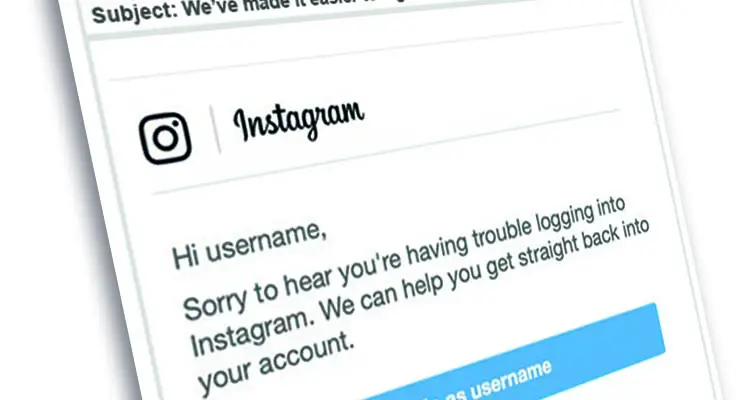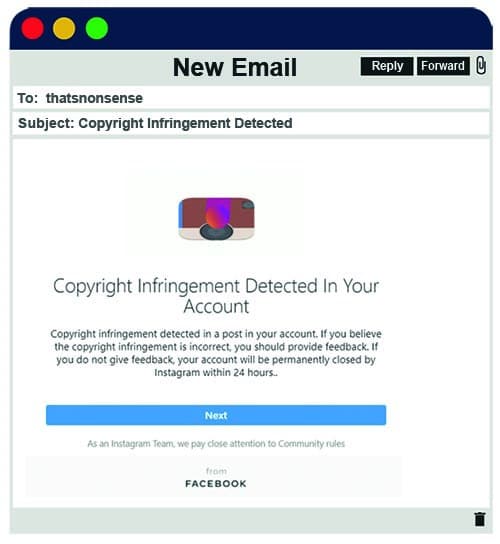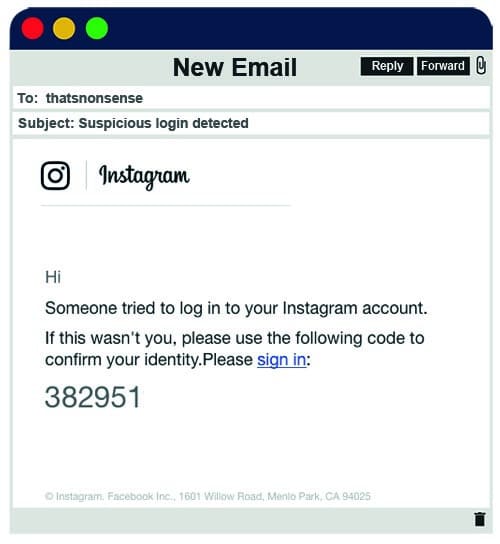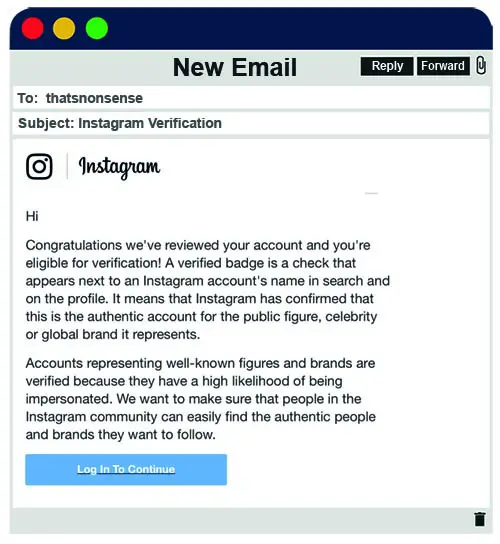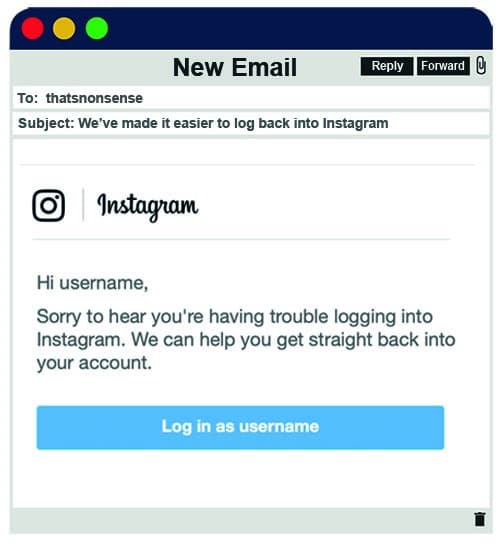Instagram phishing emails. What they look like and how to spot them
Emails that appear to come from Instagram urging the recipient to click a link to rectify a problem with their account are likely to be email phishing scams.
Phishing emails that appear to come from popular social media platform Instagram are an extremely prolific way for crooks looking to phish for our login credentials. As with all phishing emails, these scams will begin with an unexpected email landing in our inbox.
Phishing emails of this ilk generally follow the same basic template.
Unexpected email arrives from “Instagram” >> Email says something is wrong or suspicious or needs your immediate attention >> But that’s okay because the email has a convenient link for the recipient to click to sort everything out >> That link leads to spoof website owned by criminals that captures login credentials.
Sponsored Content. Continued below...
Now we know how the basic phishing email scam works we can look at some examples specific to Instagram.
Examples of Instagram Phishing Emails
The Copyright Infringement emails
These emails claim that the recipient has shared a photo on their account that is in violation of someone else’s copyright. The email threatens the recipient’s Instagram account with suspension of deletion unless the recipient clicks a link.
Suspicious Login Detected
One of the most tried and tested phishing techniques is the claim that suspicious activity has been recorded on the recipient’s account, and the recipient needs to click a link to verify their identity and/or rectify the problem.
Instagram Verification
While most Instagram phishing scams will aim to alarm users into clicking a link, this example varies a little by actually offering the user a reward for clicking. In this case the email falsely claims to offer the oft-coveted Instagram “blue tick” the platform gives to verified accounts.
Problems Logging In
This scam email purports that the recipient has had issues logging in and urges them to click a link to login successfully. The aim of this email is to confuse the recipient into clicking the link.
Anyone can avoid all of these phishing email scams by following some simple cyber-security advice.
- Don’t click on links in emails you were not expecting, even if they appear to come from someone you trust.
- If you do click a link, analyse the web address before entering any information into the website. You can learn how to spot spoof web addresses in our post here.
- Watch out for common red flags such as bad spelling and grammar and the email address that sent you the email.
Continued below...
Thanks for reading, we hope this article helped, but before you leave us for greener pastures, please help us out.
We're hoping to be totally ad-free by 2025 - after all, no one likes online adverts, and all they do is get in the way and slow everything down. But of course we still have fees and costs to pay, so please, please consider becoming a Facebook supporter! It costs only 0.99p (~$1.30) a month (you can stop at any time) and ensures we can still keep posting Cybersecurity themed content to help keep our communities safe and scam-free. You can subscribe here
Remember, we're active on social media - so follow us on Facebook, Bluesky, Instagram and X
